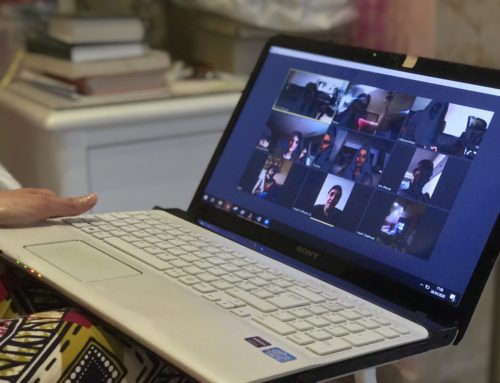 Amazon founder Jeff Bezos set the nonprofit world ablaze earlier this month by tweeting a “request for ideas” about how to direct his charitable giving.
Amazon founder Jeff Bezos set the nonprofit world ablaze earlier this month by tweeting a “request for ideas” about how to direct his charitable giving.
Not surprisingly, Bezos’ unusual public request has drawn massive media coverage, in addition to more than 42,000 replies on Twitter.
It also offers a great opportunity to talk about ‘newsjacking‘ — the public relations practice of using a hot item in the news to help generate media coverage for your organization.
If employed well, newsjacking can be a highly successful tactic for nonprofits that are looking to draw attention to their cause or point of view. In the case of Bezos’ plea for ideas, many nonprofits and foundations used his call as an opportunity to comment on their work in news stories, draft letters to the editor, and write pieces that appeared on social media.
When news breaks, reporters are often looking for fresh, thoughtful voices to put the news in context. And opinion pages are often looking for writers to respond to or add opinions about timely topics.
If you pay attention to the headlines with a critical eye, you will likely spot newsjacking opportunities for your nonprofit almost weekly.
For most nonprofits, news about government budgets and policy can have implications for their causes and the people they serve. If you are a nonprofit that specializes in health care, for example, the current push to repeal Obamacare is a prime newsjacking opportunity.
Newsjacking can also happen around stories about prominent figures coming to town to give a speech to local business groups.
If you’re creative, you can even newsjack holidays. Many groups that work on LGBTQ issues, for instance, have used Pride month as a newsjacking opportunity — leveraging the calendar to gain attention for their issues.
If your organization is looking to move beyond sending announcements about its own work — or if your goal is to position your nonprofit as a thought leader, advocate for its mission, or raise awareness about a key issue — you should consider embracing the tactic.
But before you dive in, it’s important to note that newsjacking works best when it’s done deliberately. You can’t just wait for news to happen and expect to be able to tag along unless you do some work up front.
Here are six things to remember if you’re looking to become a successful ‘newsjacker’:
- Prepare your key messages up front
Before you begin scouring Twitter or your local newspaper for newsjacking opportunities, you have to first know what you want to talk about when opportunities arise. Take time to have a clear sense of your larger communications goals and the key messages you’re looking to express.Without taking this step up front, you’re going to be scrambling when opportunities do arise — and you’ll actually struggle to identify the right newsjacking opportunities. However, if you know your key messages and have prepared your leadership to talk about those messages, you will be able to act quickly and know what you’re talking about. This will give you an important leg up when it’s time to act — and you’ll be confident that you’re saying the right things if a reporter does show up with a microphone or notebook in hand. - Develop relationships
To newsjack effectively, it helps to know how to get to the right reporter or editor quickly. Sending pitches to general e-mail boxes or calling a main newsroom line isn’t likely to get you results. Instead, identify some outlets that are of high value to your organization, pay attention to who is getting bylines around the topics you care about and start to build relationships with them. You can even tee up the fact that your organization has expertise in certain topics so that they know to come to you if they’re searching for sources online.You don’t need to rely just on phone calls or emails to begin to build these relationships. You can also start to follow journalists on Twitter and other social networks and start conversations informally. - Create protocols
News moves quickly — and newsjacking requires an ability to make your pitch while a story is still hot. As a result, it’s important to prepare your organization to make fast decisions. If you have to go through multiple layers of approval before you can send a news release or call a reporter, you’re likely to lose opportunities.To overcome this hurdle, develop a rapid response protocol so that you can get your messages out when they matter and that you can have your key spokespeople ready to go. - Stay abreast
To jack the news, you have to know the news. This means following key news outlets regularly — as well as paying attention to social media — to see what news is breaking. You can employ a number of tools to help — Google alerts around important keywords, lists of key Twitter accounts, etc. - Act quickly
Newsjacking is most effective when you make your pitch shortly after the news first breaks — and before the ‘second-day’ reports come out offering context. In the case of Bezos’ request for ideas, some nonprofits and thought leaders were able to earn coverage when the story was hot because they were able to get their messages out quickly. Those who waited were largely ignored. - Speak sensitively
Newsjacking can backfire if you don’t employ it with tact and sensitivity. The Internet is littered with examples of companies and nonprofits that have tried to attach themselves to tragedies or disasters and have come across as tone deaf or opportunistic. Make sure you’re acting tastefully and that your effort to draw attention is something that you and your organization will be proud of later.
By planning ahead — and developing a system to identify and react to opportunities quickly — your nonprofit can be able to spring into action the next time there’s an opportunity to jack the news.






